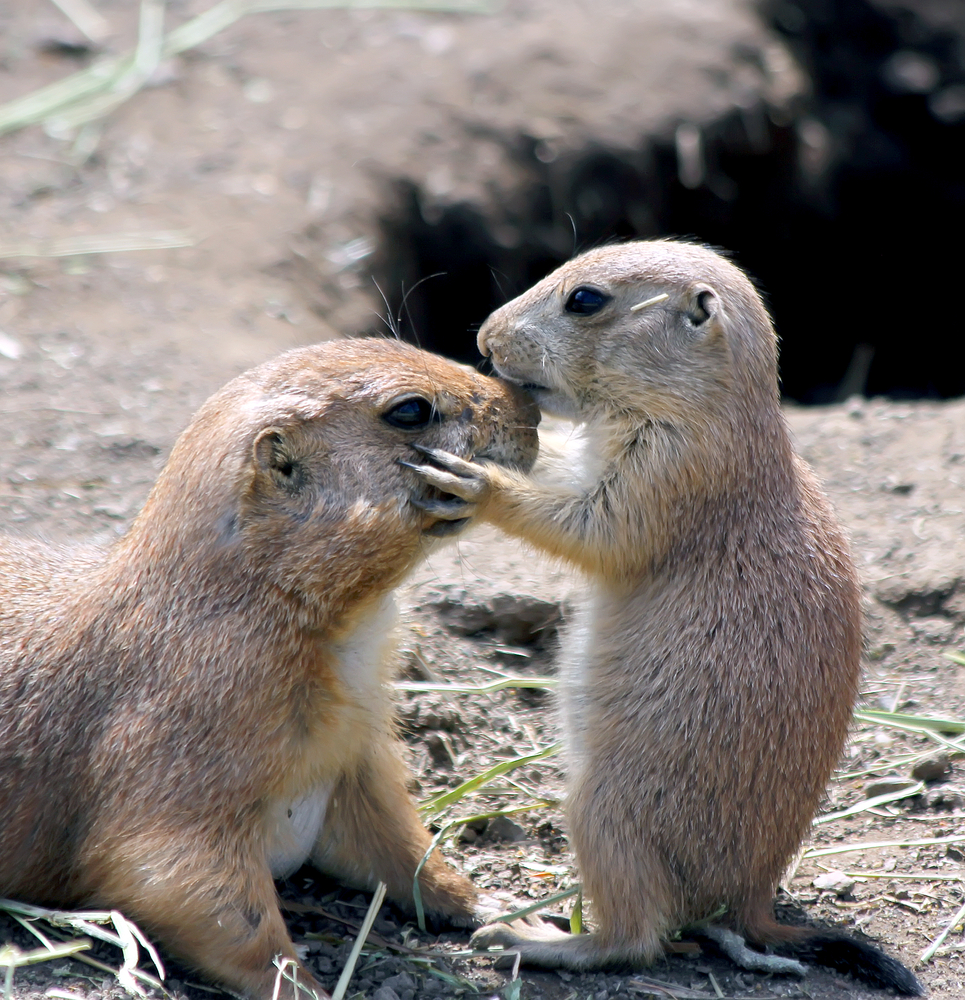Do Squirrels Have Babies In The Winter? Discover The Truth About Squirrel Breeding Seasons
When you think of squirrels, you might picture these adorable creatures leaping between trees, gathering nuts, and preparing for winter. But have you ever wondered about their breeding habits? Specifically, do squirrels have babies in the winter? This question has intrigued many wildlife enthusiasts, and the truth lies in understanding their unique breeding seasons and behaviors. In this article, we will delve into the fascinating world of squirrel reproduction, uncovering the facts behind their seasonal breeding patterns.
Squirrels are among the most common and recognizable mammals in many parts of the world. They are often seen darting around parks, backyards, and forests, displaying their agility and resourcefulness. However, their breeding habits remain a mystery to many. By exploring the specifics of squirrel breeding seasons, we can gain a deeper understanding of how these animals adapt to their environments and ensure the survival of their offspring.
This article will take you on a journey through the science behind squirrel reproduction, including when they breed, how many babies they typically have, and whether winter plays a role in their breeding cycle. We'll also touch on the importance of understanding these patterns for conservation efforts and ecological research. So, let's dive in and discover the truth about squirrel breeding seasons!
- 2flix The Ultimate Guide To Streaming And Downloading Movies
- Bflix Unblocked Your Ultimate Guide To Stream Movies Anytime Anywhere
Table of Contents
- Understanding Squirrel Biology
- Do Squirrels Have Babies in the Winter?
- Squirrel Breeding Seasons: A Closer Look
- Factors Influencing Squirrel Breeding
- Gestation Period and Baby Squirrels
- Winter Survival and Reproduction
- Breeding Patterns in Different Squirrel Species
- Debunking Common Myths About Squirrel Breeding
- The Role of Squirrel Breeding in Conservation
- Conclusion: What We’ve Learned About Squirrel Breeding
Understanding Squirrel Biology
Squirrels are a diverse group of rodents belonging to the family Sciuridae, which includes tree squirrels, ground squirrels, and flying squirrels. These animals are found on every continent except Antarctica and Australia, adapting to a wide range of environments. Their biology plays a crucial role in determining their breeding behaviors.
Key characteristics:
- Squirrels are omnivores, primarily feeding on nuts, seeds, fruits, and insects.
- They have sharp claws and strong hind legs, enabling them to climb and leap effortlessly.
- Most squirrel species have thick fur, which provides insulation during colder months.
Understanding the biology of squirrels is essential to comprehending their breeding patterns. Factors such as habitat, food availability, and climate all influence when and how often squirrels reproduce.
- Graph X Is Greater Than Or Equal To 320 A Deep Dive Into The World Of Mathematical Inequalities
- Flixer Tv The Ultimate Streaming Experience You Need To Know
Do Squirrels Have Babies in the Winter?
Winter Breeding: Fact or Fiction?
Contrary to popular belief, most squirrel species do not have babies in the winter. Instead, their breeding seasons are closely tied to environmental conditions that promote the survival of their offspring. For example, tree squirrels like the Eastern gray squirrel typically breed during two distinct periods: late winter (January to February) and summer (June to July).
While the initial breeding may occur in late winter, the actual birth of baby squirrels usually happens in early spring. This timing ensures that the young are born when food sources are abundant and temperatures are more favorable for their survival.
Squirrel Breeding Seasons: A Closer Look
Squirrel breeding seasons vary depending on the species and geographical location. However, there are some common patterns observed across different types of squirrels:
- Tree Squirrels: Typically breed twice a year, with the first litter born in spring and the second in late summer.
- Ground Squirrels: Often have a single breeding season in early spring, as they hibernate during the winter months.
- Flying Squirrels: May breed once or twice a year, depending on the species and environmental conditions.
These seasonal variations highlight the adaptability of squirrels to their surroundings and the importance of timing in their reproductive success.
Factors Influencing Squirrel Breeding
Several factors influence when and how squirrels breed:
- Temperature: Warmer temperatures signal the start of the breeding season for many squirrel species.
- Food Availability: Abundant food sources, such as nuts and seeds, are crucial for successful reproduction.
- Daylight Hours: Longer days in spring and summer can trigger hormonal changes that initiate breeding behavior.
By aligning their breeding with favorable environmental conditions, squirrels increase the chances of their offspring surviving and thriving.
Gestation Period and Baby Squirrels
The gestation period for most squirrel species ranges from 38 to 46 days, depending on the type of squirrel. During this time, female squirrels prepare their nests, known as dreys, to provide a safe and comfortable environment for their young.
Once the babies are born, they are blind, hairless, and completely dependent on their mother for survival. Over the next few weeks, the mother squirrel will nurse and care for her offspring until they are ready to venture out on their own.
Winter Survival and Reproduction
Winter poses significant challenges for squirrels, as food sources become scarce and temperatures drop. To survive, many squirrel species rely on food caches they have stored during the warmer months. However, reproduction during the winter is rare, as the harsh conditions make it difficult for both mother and offspring to survive.
Instead, squirrels focus on conserving energy and staying warm during the colder months, reserving their reproductive efforts for more favorable times of the year.
Breeding Patterns in Different Squirrel Species
Eastern Gray Squirrels
The Eastern gray squirrel, commonly found in North America, is known for its two breeding seasons each year. These squirrels typically give birth to litters of 2 to 4 babies, with the first litter arriving in early spring and the second in late summer.
Red Squirrels
Red squirrels, native to Europe and parts of North America, usually breed once a year in early spring. They produce smaller litters compared to gray squirrels, with an average of 2 to 3 offspring per litter.
Debunking Common Myths About Squirrel Breeding
There are several misconceptions about squirrel breeding that need clarification:
- Myth: Squirrels breed year-round. Fact: Most squirrel species have specific breeding seasons tied to environmental conditions.
- Myth: Baby squirrels are born fully developed. Fact: Newborn squirrels are blind, hairless, and require extensive care from their mother.
- Myth: Squirrels hibernate during the winter. Fact: While some ground squirrels hibernate, tree squirrels remain active throughout the winter months.
By dispelling these myths, we gain a clearer understanding of squirrel breeding behaviors and their ecological significance.
The Role of Squirrel Breeding in Conservation
Squirrel breeding patterns are closely monitored by conservationists to assess the health and stability of squirrel populations. Factors such as habitat loss, climate change, and predation can all impact breeding success and overall population dynamics.
Efforts to protect squirrel habitats and promote food availability can help ensure the survival of these important species. By understanding their breeding behaviors, we can develop more effective conservation strategies to preserve squirrel populations for future generations.
Conclusion: What We’ve Learned About Squirrel Breeding
In conclusion, squirrels do not typically have babies in the winter. Instead, their breeding seasons are carefully timed to coincide with favorable environmental conditions that promote the survival of their offspring. By exploring the biology, behavior, and ecological significance of squirrel reproduction, we gain a deeper appreciation for these remarkable creatures.
We invite you to share your thoughts and questions in the comments section below. Additionally, feel free to explore other articles on our site to learn more about wildlife and conservation efforts. Together, we can make a difference in preserving the natural world for all its inhabitants!
Data source: National Geographic
- Movie Laircc Your Ultimate Destination For Movie Buffs
- Graph X Is Greater Than Or Equal To 20 Unlocking The Secrets Behind This Powerful Mathematical Concept

When do Squirrels Have Babies and How Many Are in a Litter? Squirrels

Squirrel Lifecycle When Squirrels Mate and Have Babies

Do Squirrels Eat Baby Squirrels? Here's the Shocking Truth! Squirrel